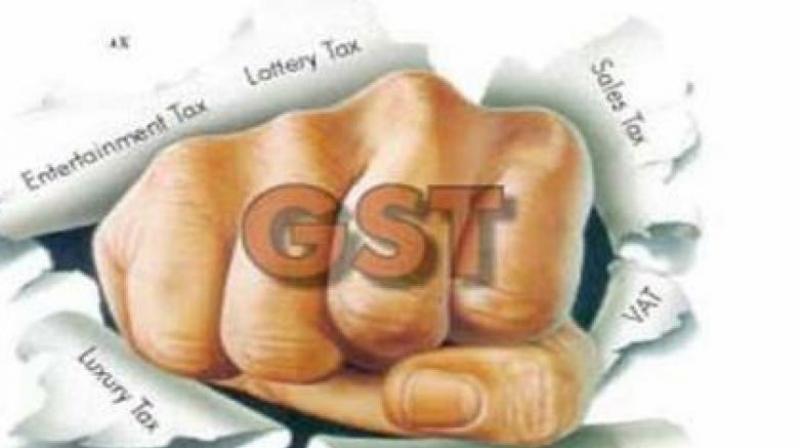Traders think out of the box to evade GST
Splitting bills is easiest way to avoid tax, find officials.

Hyderabad: Traders are exploring innovate ideas to beat GST norms. Officials of the commercial taxes and civil supplies department, who are touring all the districts to examine implementation of GST at ground-level, found that millers and dealers were insisting on loose sale of rice to get tax exemption as packaged rice bags attract 5 per cent GST. Others are seeking withdrawal of trade mark registration for rice to get GST exemption as branded rice attracts tax.
Traders, especially into footwear and apparel business, are trying to split the bills to claim tax exemption on overall bills for these categories. With GST mentioning tax only on rice bags weighing between 5 kg and 25 kg, some traders are trying to sell bags weighing 30 kg and above, forcing officials to seek clarification from higher-ups over how these bags should be taxed. Some traders are trying to split their shops into two or three entities on paper to keep the annual turnover lower than Rs 20 lakh to claim GST exemption.
These issues came to light in the recent meeting chaired by finance minister Etala Rajender to review the implementation of GST in the state. Officials informed the minister how the traders were trying to evade GST and sought more stringent norms to check tax evasion. Mr Rajender said, “This is because of higher tax slabs prescribed for certain goods and services under GST. I have repeatedly said in the GST Council meetings that the tax slabs should be practical and if not, traders will try to evade taxes. The GST Council should review all these issues after examining the implementation of GST for three months and take corrective measures.
Otherwise, it will result in revenue loss to both the states and the Centre.” Officials informed the minister that multiple tax slabs prescribed under GST were confusing consumers and this was being exploited by some traders. With packaged food items attracting GST, traders are resorting to selling food items in loose to evade tax. Footwear traders are ensuring that the overall bill amount is less than Rs 500 by splitting bills since it attracts only 5 per cent tax and bill above Rs 500 attract 18 per cent tax. Similarly, apparel traders are splitting bills to ensure total bill amount is less than Rs 1,000 as it attracts only 5 per cent tax. If the bill amount is over Rs 1,000, they have to pay 12 per cent tax.
Coaching centres pass the buck to parents:
Parents have started feeling the pinch of GST as coaching classes for their wards now cost more. There is huge demand for coaching centres which train students for engineering, IIT, medical and management entrance exams in state. Hyderabad is a hub for coaching centres with over 5,000 such centres training over 30 lakh students for entrance, recruitment and board exams. Lakhs of students from across the state take admission in these coaching centres.
The coaching centres have been brought under GST from July 1. With this, all the coaching centres have hiked fees and passed the tax burden on to parents and students. A reputed coaching centre for medical and engineering entrance exams with multiple branches in the city has been asking students to pay an additional Rs 20,000 on the overall fees of Rs 1 lakh, citing GST. Parents want the Centre to exempt coaching classes from GST.
“Nowadays, coaching is necessary for students from all sections due to stiff competition for limited seats in reputed professional colleges or limited jobs in state or Central government sectors. Earlier, only the rich or those who could afford to do so used to admit their wards in coaching centres. But now, those who cannot afford to also prefer coaching and even take loans for this. Parents from middle and lower-middle income groups will suffer due to GST on coaching centres. The government should consider exempting GST for coaching,” said P. Ashwin Kumar, a parent.
GST rate finder APP gets a mixed reaction:
The Centre has launched the ‘GST Rate Finder’ a mobile application, for the convenience of citizens and traders to get a better understanding of the different tax slabs for goods and services under the next taxation structure. However, the app has received mixed reactions from users. According to Central Board of Excise and Custom which developed the app, GST Rate Finder would be handy for consumers, traders, students or anyone who wishes to have GST rates available on his fingertips.
Initially, the app is available only for Android mobiles, but soon it will be made available for Apple’s iOS users as well. Ravikant Gupta felt that the app was not user-friendly and needed much improvement. Chamakeri Kiran said that it was helpful for people to know the tax rate and also HSN code of each product. Another user Gaurav Navalakha stated that app felt like a small handbook. “Good initiative,” he said, lauding the Centre.
The app has three options of tax rates for goods, tax rates for services and information about CBEC, which will take the user directly to CBEC website. In the tax rate for goods, one can see different slabs (0 per cent to 28 per cent) and by clicking on each slab, one can see the different names of goods in that category. The same procedure is applicable to know GST on services. Also, there is a search option that will list all goods and services containing the name typed in the search box.

